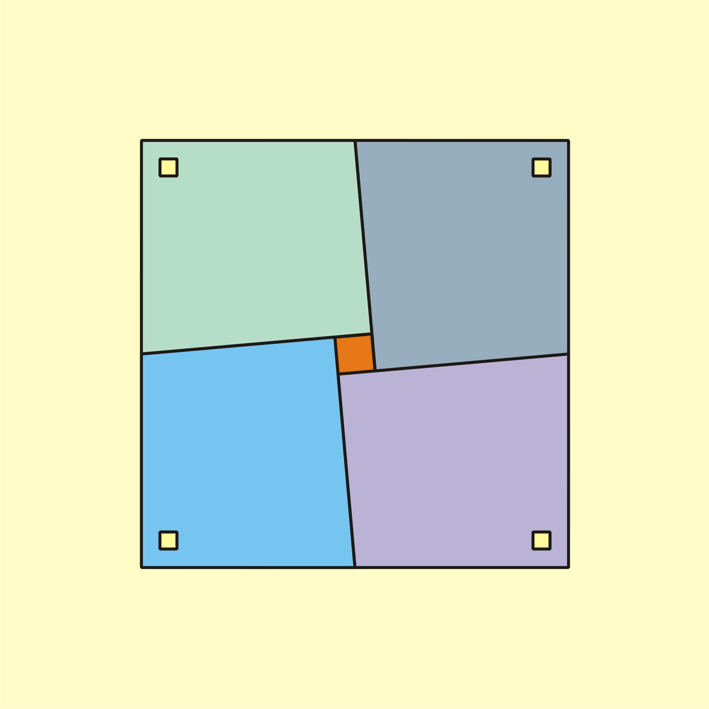The Missing Square Puzzle
Here is a simple activity you can do with a group to emphasize the importance of collaboration and partnership in mission.
There are many variations of the Missing Square puzzle, but they all involve several pieces of a puzzle that when arranged one way form a complete shape (square, rectangle, triangle, etc.) but when rearranged another way leave a gap or missing piece (usually a square or parallelogram shape). It is a common type of puzzle used in magic tricks.
The Matsuyama Paradox
The following group activity is based on a type of Missing Square puzzle called the Matsuyama Paradox (pictured below). In this example, the orange square represents the gap or empty space.

Preparation:
Each participant or group (up to four participants) will need a puzzle with four pieces.
1. Get some stiff paper or cardboard and cut out square shapes.
2. Then cut each square into four pieces. Notice in the illustration above when the dots or circles are in the middle. You will cut two diagonal lines across the square to make the shapes you see in the illustration.
3. Finally, draw four large dots or circles in the corners of the four pieces as you see them in the illustration. You could even draw little stick figures representing people.
Instructions:
Setup –
1. Give each participant or group a puzzle with the four pieces.
2. Tell them that each of the four pieces represents a different church/organization/agency. They are working in the same area or with the same people group, but they each do different types of ministry.
3. Have each participant or group briefly make up a scenario for themselves: What is the common area they are working in? What are their different ministries?
Part 1 –
1. Now tell the participants to take the four pieces and put them together on the table so that they form a square shape, with the dots or circles facing “away” from each other in the four corners.
2. Ask them, “What do you notice about the square?” [There is an empty space in the middle.]
Part 2 –
1. Now tell them to simply spin the four pieces around so that the dots or circles are facing “toward” each other in the middle of the square. No need to rearrange the pieces. Just spin them around.
2. Ask them, “What do you notice about the square now?” [There is no empty space.]
Part 3 –
1. Have them spin the pieces around and back again a few more times.
2. Ask them, “Does the square seem to be about the same size either way you spin the four pieces?”
Explain:
This is called a Missing Square puzzle and it is an illustration about the importance of partnership.
At first, the four of you were were facing “away” from each other. You were in the same area, but working without any mutual awareness or cooperation. In this situation, there is a gap – an empty space. No matter how hard you all work, you will never close the gap. You will never be able to complete your mission.
But then, the four of you turned around so that you were facing “toward” each other. Now you were working together with awareness and cooperation. Now the gap is closed. The individual pieces did not grow. The overall square was the same size. But now there is no empty space.
Only by facing “toward” each other in collaboration could you close the gap and complete your mission.
Debrief:
Have the participants debrief the activity with a few minutes of discussion. Here are a few sample questions:
In your own church/organization/agency, what do you feel are the barriers to collaboration with others?
Where do you see “gaps” in your ministry areas?
How could collaboration close the gap?
Try out this activity with your group and share your experience in the comments!

